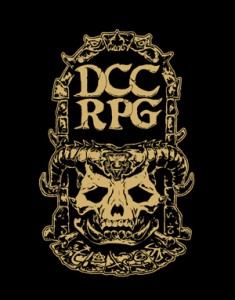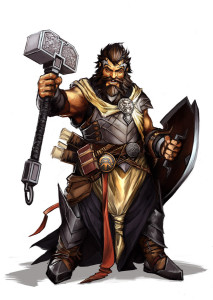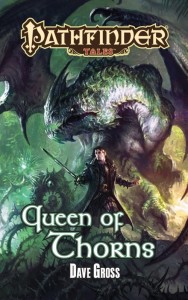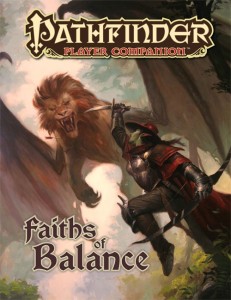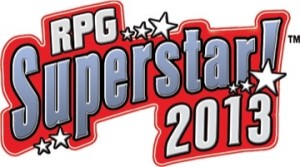This review is a repost of my original review of this product for the Seekers of Secrets Pathfinder blog. The original review is no longer available on that site and I wanted to preserve the post here at The Iron Tavern.
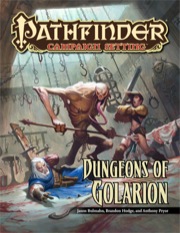 Price: Print – $19.99 / PDF – $13.99
Price: Print – $19.99 / PDF – $13.99
Audience: GMs
Crunch: 3.5/5
Fluff: 5/5
Overall: 5/5 (not an average)
Dungeons of Golarion is a 64 page book that is part of the Pathfinder Campaign Setting series of books from Paizo. The book looks closely at six different megadungeons within the Inner Sea region of Golarion, the Pathfinder Campaign setting. These megadungeons include Candlestone Caverns, Gallowspire, Hollow Mountain, Pyramid of Kamaria, Red Redoubt of Karamoss and Zolurket Mines. It also lists 17 other dungeons within Golarion each with a short paragraph about the dungeon.
The six megadungeons each get ten pages that include an overall layout map of the dungeon, history, descriptions that cover the entrance and brief overview of each level, a section on denizens, traps, treasures and finally adventure hooks.
While the descriptions of each level are brief, there is plenty of information to help a GM discover the feel of each level. The balance between having the feel for the dungeon and being able to design your own level is excellent. Just enough information to get the ideas flowing rapidly without forcing the GM into being restrained by overly defined levels.
The book is heavier on the fluff side, but there is some crunch sprinkled in to keep the more crunch inclined interested. Amongst the chapters on the six megadungeons there are new denizens, new traps and new magic items and such to work with. For the Numeria fans there is also some information on robots that comes from the section on Red Redoubt of Karamoss.
The art and cartography are up to the usual Paizo quality. The maps and dungeon layouts look great, though one of the dungeon layouts includes a key that indicates each square is 10′ when really the map is not entirely to scale. Minor issue and does not affect the quality of the map itself. The art work has several images that are sure to inspire heroics within the dungeon!
I have very little to complain about in this book. While not a huge fan of the amount of technology in Red Redoubt of Karamoss with its Numeria based technology, it is a well done section and I am sure fans of technology from Numeria will enjoy it! And the book does warn for those that are not fans of the fantasy blending into technology it is might be best to avoid that dungeon or the book offers a couple of alternatives of how to scale down the technology if desired by the GM.
I found the Gallowspire write-up very interesting and certainly a dungeon to challenge the highest level Pathfinder characters. An interesting sidebar in this section notes that several of the levels in Gallowspire contain threats beyond levels the currently published Pathfinder ruleset cover with some levels going to CR24+.
I found the Dungeons of Golarion a very enjoyable read. It offers a plethora of plot hooks for all of these dungeons and really gets the GMs mind turning. There is enough detail on the dungeons to give a GM a solid start to designing a megadungeon to haunt their players for an entire campaign. And for those who might not game in Golarion the dungeons within could easily be dropped into your campaign world of choice.
I rated the crunch portion of the book a 3.5 out of 5 simply due to the amount of crunch in the book. What was in the book was good, but those looking for a crunch heavy book are apt to be disappointed. From the fluff perspective I rate the book a 5/5. There is history included behind each dungeon and enough plot hooks to keep a GM busy for a long time. This leaves me with an overall rating of 5/5 as I do expect the Campaign Setting series of books to be much more about the fluff than the crunch!

